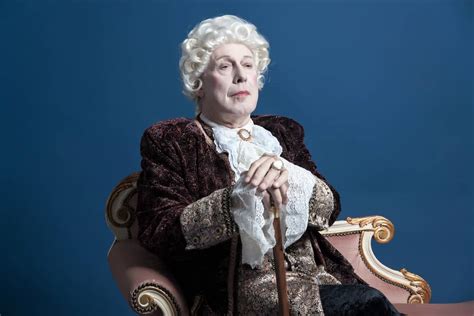Table of Content
- What is a French Powder Wig?
- Types of French Powder Wigs
– Peruke
– Ramillie
– Fontange
– Queue - History and Evolution of French Powder Wigs
– Symbol of Power and Aristocracy
– Exaggerated Styles
– Decline of French Powder Wigs - Cultural Impact of French Powder Wigs
– Fashion and Aesthetics
– Social Hierarchy
– Political Symbolism - Maintaining French Powder Wigs
– Elaborate Care Routine
– High Maintenance
– Signs of Wealth and Prestige - French Powder Wigs in Modern Times
– Historical Reenactments
– Costuming and Theatre
– Museum Displays
– Art and Literature
The Allure of French Powder Wigs
With their elaborate curls, towering heights, and pristine white color, French powder wigs have captured the imagination of generations. These iconic headpieces emerged during the 17th century and played a pivotal role in fashion, social status, and historical events.

Types of French Powder Wigs
French powder wigs came in various styles, each with its unique characteristics:
Peruke
- Classic wig with long, flowing curls
- Most popular style in the 18th century
Ramillie
- Shorter wig with tighter curls
- Named after the Battle of Ramillies
Fontange
- Exaggerated wig with towering heights
- Worn by aristocratic women in the 17th century
Queue
- Long, braided hair tied at the back of the head
- Worn by men as an alternative to wigs
Historical Significance
French powder wigs emerged as a symbol of power and aristocracy. They were worn by kings, queens, and the upper classes to convey wealth and status. The wigs’ exaggerated styles reflected the extravagance and opulence of the era.
Cultural Impact
Fashion and Aesthetics: French powder wigs influenced fashion trends, with their elaborate curls and white color becoming popular among both men and women.
Social Hierarchy: Wigs served as a visible indicator of social status, with different styles reserved for different ranks of society.
Political Symbolism: Wigs were also used to express political sentiments, with certain styles associated with different factions during the French Revolution.
Maintenance and Care
Maintaining French powder wigs required an intricate and time-consuming care routine. Wigs were regularly powdered with white starch to keep them clean and free of lice. The powdering process involved applying a paste made from wheat flour or rice powder, which was then brushed out to create a smooth and white finish.
Decline of French Powder Wigs
The popularity of French powder wigs began to decline towards the end of the 18th century. The wigs’ elaborate styles became increasingly impractical and were replaced by more natural hairstyles, such as powdered queues and short bobs.
French Powder Wigs in the 21st Century
Today, French powder wigs are primarily associated with historical reenactments, costuming, and museum displays. They continue to fascinate historians, fashion enthusiasts, and anyone interested in the grandeur and extravagance of the past.
Conclusion
French powder wigs were more than just elaborate headpieces. They were a symbol of power, fashion, and social change. While their popularity may have waned over time, their legacy lives on in historical reenactments, museum displays, and the enduring appreciation for the artistry and craftsmanship of the past.
Table 1: Timeline of French Powder Wig Evolution
| Period | Style Highlights |
|---|---|
| 17th Century | Fontange: Exaggerated heights |
| 18th Century | Peruke: Classic long, flowing curls |
| Ramillie: Shorter, tighter curls | |
| Late 18th Century | Queue: Long, braided hair tied at the back of the head |
| 19th Century | Decline of wigs, replaced by more natural hairstyles |
Table 2: Statistics on French Powder Wig Care
| Task | Time Required |
|---|---|
| Powdering | 1-2 hours |
| Brushing | 30-60 minutes |
| Curling | 1-2 hours |
| Maintenance | Daily brushing and powdering |
Table 3: Pain Points for French Powder Wig Wearers
| Pain Point | Mitigation Strategies |
|---|---|
| Itching and lice | Use of delousing powders and regular washing |
| Tangled hair | Careful brushing and use of detangling products |
| Breakage and damage | Avoid excessive brushing and use of heat styling tools |
| Powder mess | Use of powder guards and careful application in a well-ventilated area |
| Expensive maintenance | Purchasing high-quality wigs and seeking professional styling services |
Table 4: Motivations for Wearing French Powder Wigs
| Motivation | Description |
|---|---|
| Historical reenactors | Accurate historical representation |
| Costumers | Authenticity and immersion in period dramas |
| Museum curators | Preservation and display of historical artifacts |
| Art collectors | Appreciation of craftsmanship and aesthetic value |
| Fashion enthusiasts | Inspiration and experimentation with historical fashion trends |
| Novelty seekers | Unique and eye-catching accessory |
Tips and Tricks for French Powder Wig Enthusiasts
- Use a wide-toothed comb: This will help prevent damage to the wig’s delicate curls.
- Avoid using too much powder: This can make the wig look dull and heavy.
- Store wigs in a cool, dry place: Heat and humidity can damage the wig’s fibers.
- Invest in a wig stand: This will help keep the wig’s shape when not in use.
- Consider getting a custom-made wig: This will ensure a perfect fit and a more natural look.
- Have fun experimenting: Don’t be afraid to try different styles and accessories with your French powder wig.
